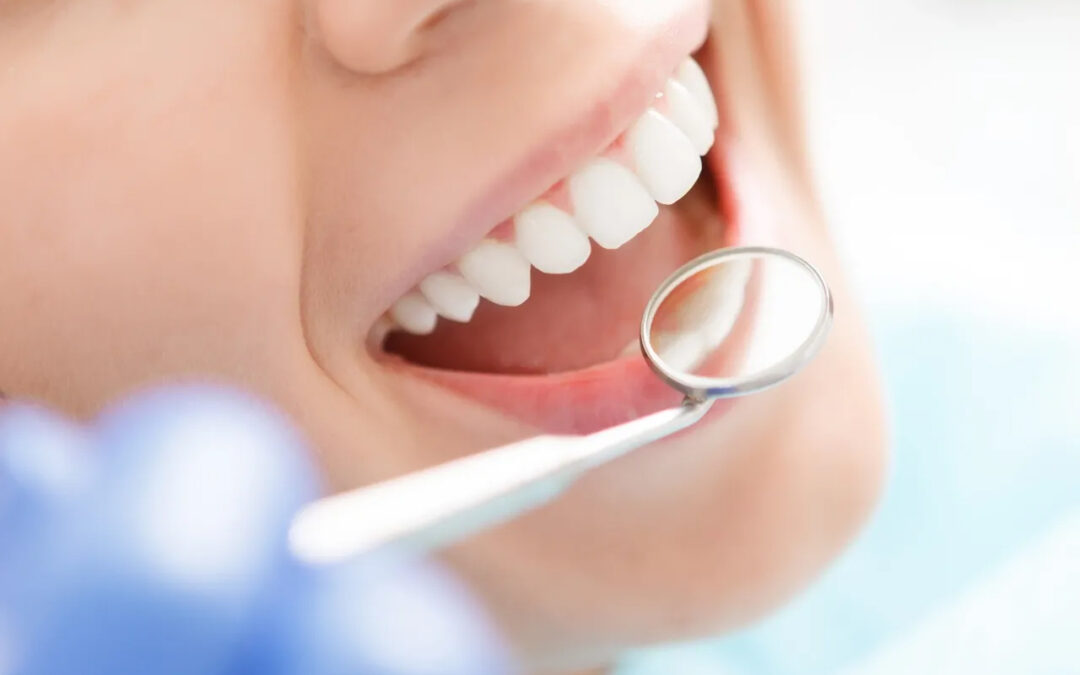
by elision | Mar 19, 2019 | Uncategorized
[vc_row][vc_column][vc_column_text]Teethwhitening in Joliet
Most back teeth or molars have natural grooves and pits on the chewing surfaces, which make them more at risk of having cavities. This is because even in best practices of optimum oral hygiene (brushing and flossing regularly), these grooves and pits hold food, and hence, bacteria have more chances of growing within it. When bacteria grow in our mouth, they consume the sugary food we eat, and say “thank you” to us, by producing acid. Acid breaks down out teeth, causing decay of our teeth- cavities.
What are Dental sealants?
Sealants are primary prevention procedures placed on chewing surfaces of teeth to prevent cavities from starting. Sealants can also stop the progression of active cavities. Sealants are made of plastic materials, which are thinly “glued” to natural grooves and pits in teeth, and can “even” the surfaces of teeth, so that there are no hidden, difficult to clean surfaces.
Who needs Sealants?
Everyone needs sealants, although the younger one is, the better. Children who benefit early from sealants have more protection against cavities than those who do not. According to Centers for Disease Control (CDC), “sealants prevent the most cavities when applied soon after permanent molars come into the mouth (around age 6 for 1st molars and age 12 for 2nd molars)”.
Benefits of Sealants
- Sealants are fast and painless-do not involve getting numb, or getting a drilling.
- According to CDC, sealants protect us from 80% of cavities for two years, and continue to protect us against 50% of cavities, up to 4 years.
- Sealants as an effective primary prevention against cavities can totally remove the need for fillings and crowns, which are invariably more expensive, involve getting numb and getting a drilling.
The Process of getting sealants
Your dentist, dental hygienist, or other qualified health professional can help place your sealants. It involves the process of chemo-mechanically opening the pores on the surface (first layer) of the tooth (using a substance called etch), priming the tooth with another substance called “bond” (achieves better adhesion), then flowing in the sealants, and using the blue light to harden them. All of these processes are completely pain free!
According to ADA, there are no known side effects of sealants with the exception of allergy that may exist. BPAs in sealants are in such smaller small amounts, compared to the BPA exposure we get by touching receipts, or using cosmetics.
Does my Insurance cover Sealants?
Most insurances cover sealants for children, including Medicaid and PPO insurances. You may have to check with your Insurance to confirm coverage.
At Smile League Dental, your education and health is our priority!
Give us a call on 815-782-6243 to schedule your sealant appointment today. Visit smileleagudental.com for more information.[/vc_column_text][/vc_column][/vc_row]

by elision | Mar 15, 2019 | Uncategorized
[vc_row][vc_column][vc_column_text][/vc_column_text][vc_column_text]Gum disease is also known as periodontal disease, and it is primarily caused by plaque, which is the sticky substance we can easily scratch off from the surface of our teeth when we do not brush. Gum disease is a major cause of tooth loss in adults and the elderly population.
Learn more about Proper Brushing and Flossing of Teeth for Optimum Dental Health
In the initial stage of formation, plaque is a biofilm, made up of bacteria, water and complex proteins. If not brushed or flossed away, plaque hardens into tartar, a pale yellowish- brownish deposit (mostly found behind the lower front teeth).
It is well known that bacteria causes inflammation in our body. So also, bacteria in dental plaque causes gum disease, because it causes an inflammation of the surrounding gum tissues, including the gums, bone and the attachment of teeth to bone (called periodontal ligaments). When gum disease infects the gums, bone and attachment of teeth to bone, it can also infect the tooth in a retrograde (perioendo lesion) manner, and will need to be treated with a deep cleaning procedure and also, a root canal treatment.
Learn more about root canal treatment
Gum disease usually occurs over a period of time even decades (chronic type). Since gum disease is not painful, a lot of adults do not know they have it, and do not seek for treatment, until it is too late.
Signs of gum disease
- gums that bleed when you brush
- red, swollen, painful gums
- teeth that appear longer than usual, because the gums have pulled away from it
- bad breath or bad taste that persists
- changes in the way your teeth fit together when you clench or bite
- change in the fit of partial dentures
Factors that increase the risk of gum disease
- not brushing and flossing regularly
- using tobacco products: smoking or chewing
- genetics
- crooked teeth that are overlapping and hard to keep clean
- pregnancy
- pregnancy
- medications, including steroids, certain types of anti-epilepsy drugs, cancer therapy drugs, some calcium channel blockers and oral contraceptives.
Stages of gum disease
Gingivitis: This is the early stage of gum disease, when only your gums are inflammed, and appear red, swollen and easily bruise (especially when your brush). At this stage, the disease is still reversible. See treatment below
Periodontitis: Periodontitis is inflammation of the bone and its attachment. When bone is inflammed, it undergoes resorbtion, or it simply “goes away”, compromising support for the teeth. It can be so severe that you will feel your teeth are loose, and moving when you try to move it. The chronic type of periodontitis occurs over time, and it is very common in the adult and elderly population. The aggressive type is very destructive and occurs in the younger population, and can cause rapid tooth loss.
Some studies indicate that severe gum disease may be associated with several other health conditions such as diabetes or stroke, but no conclusive association has been published.
How is gum disease treated?
Your dentist will treat your gum disease, depending on the stage.
Gingivitis: This is usually treated on a single visit with regular cleaning. You then have to keep up with good oral hygiene of brushing and flossing.
Periodontitis: May be treated in multiple appointments, with “maintenance” follow-ups. X-rays help to diagnose what disease stage you are at, and the amount and locations of tartar to be removed. Your dentist will also do a probing check to see how much bone and attachment you have lost. The periodontal probing may be slightly uncomfortable, but it needs to be gently carried out. After this is completed, the dentist draws an action plan to determine your frequency of visit for recall and maintenance appointments.
According to American Dental Association, “It is possible to have gum disease and have no warning signs. That is one reason why regular dental checkups and periodontal examinations are very important. Treatment methods depend upon the type of disease and how far the condition has progressed. Good dental care at home is essential to help keep periodontal disease from becoming more serious or recurring. Remember: You don’t have to lose teeth to gum disease. Brush your teeth twice a day, clean between your teeth daily, eat a balanced -diet, and schedule regular dental visits for a lifetime of healthy smiles”.-
Schedule your appointment today for a free consultation and detailed plan o action to treat Gum disease. Call 815-782-6243. Visit us at smileleaguedental.com for more details[/vc_column_text][/vc_column][/vc_row]

by elision | Mar 15, 2019 | Uncategorized
[vc_row][vc_column][vc_column_text][/vc_column_text][vc_column_text]Do you suffer from jaw pain, swelling, redness in the gums, bad taste in the mouth, or fever? This may be a way your body is telling you that you have an infection in your gums or tooth, which has spread to the bone around your tooth. Some of the signs and symptoms you may see are:
- Tooth discoloration or dark stains on tooth- this may be a sign that you have a cavity.
- Fractured or cracked tooth- your tooth may crack or fracture due to a gross decay, habits like bruxing (clenching), traumatic occlusion, or chance.
- Difficulty chewing- Since the bone and the periodontal ligaments are infected, chewing may be painful when the tooth slightly depresses and moves within the bone.
The hallmark/ultimate sign of an infected tooth is an abscess or pus, which is caused by bacteria in the dental pulp (the only living tissue in the tooth, in the innermost layer) which has spread to the bone, or bacteria in the gums (periodontal origin).
How do I know I have an abscess and what is the severity?
You may have an abscess if your gums appear red and swollen, or you have a swollen jaw, bad taste in your mouth, or a fever. Because we have anatomical sites in the soft tissues around our jaw called fascia and spaces, abscesses can easily spread to different locations. They can spread upwards to the head, or downwards to the chest (ludwig’s angina), and both have proven to be fatal.
What to do if I have an infected tooth or an abscess
You definitely want to make an appointment with your dentist,as this is a dental emergency. Your dentist will usually first take an x-ray to confirm the infection or abscess, they may want to prescribe antibiotics, drain the infection, clean the space between your gum and tooth (if from gum disease) or perform a root canal treatment
Learn what a root canal treatment is by clicking here
You can significantly decrease your risk for dental infection and emergencies if you routinely see your dentist every 6 months.
At Smile League Dental, we are here to service all your dental needs, and accept walk-ins or dental emergencies as priority cases. Make your appointment with us today by calling us on 815-782-6243. Visit smileeaguedental.com for more information[/vc_column_text][/vc_column][/vc_row]

by elision | Mar 10, 2019 | Uncategorized
[vc_row][vc_column][vc_column_text][/vc_column_text][vc_column_text]My patients often ask if they should take out their wisdom teeth. Sometimes, they say it hurts, and other times, they say it doesn’t, but they still want my opinion on keeping or taking it out.
In this edition, I will be discussing about the wisdom teeth, and giving insights about why you should keep or take out your wisdom teeth.
Your wisdom teeth are the last of the bunch to erupt, usually around 17-21 years; past the teen years, little wonder they are called “wisdom” 🙂 Sometimes, erupting wisdom teeth can be uncomfortable (think of teething toddlers) but slight discomfort with eruption is normal.
A major concern with wisdom teeth is the need for room to accommodate them. If you have enough room in your jaw, your wisdom teeth will serve as extra surfaces to help with food chewing. You only have to make sure you are brushing and flossing adequately, and you may keep your healthy wisdom teeth for a life time (with regular evaluation from your dentist of course). However, when there is no room to erupt, due to a small jaw, they sometimes get fully or partially stuck (impacted) in the bone, or come out poorly angled. This may give rise to a variety of problems, including:
Pain: Your gums might appear swollen and painfully when food and bacteria get caught underneath/around the partially stuck tooth.
Cavities: Due to difficulty in brushing and flossing adequately,cavities might form on the wisdom teeth, and the back of the molar next to it, making two cavities- one on the wisdom and the other, the tooth next to it. If this continues unnoticed, you might be having infection on both your wisdom tooth, and the molar next to it.. I see this pretty commonly with lower impacted wisdom teeth, and patients then have to first extract their wisdom tooth, and decide on a root canal procedure or another extraction of the next molar.
Gum disease: Also, due to inability to brush and floss adequately, the gums around the wisdom teeth might be harboring lots of bacteria, compromising periodontal health.
Cysts/tumors: Impacted teeth can form cysts or tumors
If your wisdom teeth are stuck or poorly angled, you might want to consult with your dentist and follow a treatment plan for possible removal/extractions. Otherwise, if your wisdom teeth are fully erupted, do follow up with your dentist for continuous evaluation. It is important that you brush and floss them adequately, if you want to continue keeping them for a lifetime!
Call us on 815-782-6243 for free Consultation and x-rays to fully diagnose your wisdom teeth.Ask about our discounts for March special. Visit us at smileleaguedental.com for more information[/vc_column_text][/vc_column][/vc_row]

by elision | Feb 24, 2019 | Uncategorized
[vc_row][vc_column][vc_column_text]For anyone who has experienced a severe tooth ache, you know it is definitely not fun!… Well it is said that severe tooth ache can be compared to pain of childbirth, only that one births a tooth, right?..
Emergency due to tooth ache are a common occurrence in the dental office. The most common reason for emergencies are usually due to untreated cavity/cavities, that has infected the nerve/pulp tissues.
Usually, a procedure called Root Canal Treatment may be carried out to save the tooth, followed by a crown treatment. Sometimes the decay might be so extensive that the tooth is no more savable by a Root Canal Treatment, and would need to be taken out/extracted.
How do I know I need a Root Canal Treatment?
- You may be feeling a throbbing pain, that may be referred to other parts of the body, causing headache, ear ache, eye ache, etc. The pain may be severe enough to keep you from sleeping.
- You may be feeling sensitivity to cold food/drink from a tooth/teeth
- You may feel a hole in your mouth, which does not cause you pain, but has infected the pulp (diagnosed by the dentist).
Other Causes of Dental Emergencies
- Pain from an impacted wisdom tooth/teeth: This would need to be taken out/extracted.
- Fractured tooth: You may fracture your tooth due to an ongoing untreated decay, trauma, clenching too hard (bruxism), or biting on something, etc. The dentist would have to evaluate what treatment modality would be best for you.
- Trauma/accidental impact on tooth: maybe minor, with only a chip of tooth, or severe with slight or significant tooth mobility, displacement or loss of tooth. Regardless of the extent of the injury, your tooth requires immediate examination by a dentist.
What to do if you lose your tooth/teeth due to trauma/accidental/sport injury
If your teeth are permanent, you should immediately put your tooth in an available solution/medium like milk, saliva, Hank’s solution. Call your dentist. immediately.
At Smile League Dental, we understand how dental pain can significantly affect your day, work and normal activities. We are committed to bringing you in as a walk-in, and helping to alleviate your pain/dental emergency.
Feeling toothache?
No one should suffer from tooth ache!
At Smile League Dental, we have on call Emergency Dentist committed to alleviating your dental pain. Call us now on 815-782-6243. Visit us at smileleaguedental.com for more details
[/vc_column_text][/vc_column][/vc_row]

by elision | Feb 21, 2019 | Uncategorized
[vc_row][vc_column][vc_column_text][/vc_column_text][vc_column_text]
SILVER IS THE NEW BLACK
Recently, the American Dental Association (ADA) approved the clinical use of Silver Diamine Fluoride (SDF) in management of treating or arresting advanced cavitated lesions (teeth decays).
What is SDF?
SDF is a medicament consisting of silver, fluoride, water and ammonia, which can be placed on a tooth that is actively decaying, to arrest the process. It is minimally invasive compared to the conventional way of treating cavities, which involves getting locally anesthetized (numb), the decay being drilled off, and the portion of the decayed tooth replaced with a filling material, either resin or amalgam. Instead, in treating carious lesions with SDF , the dentist simply applies the medication topically on the decayed tooth (baby or permanent) over a two week period followed by biannual reapplication.
The benefit of SDF and the downsides…
SDF has been shown to be very effective in arresting advanced cavities. It is minimally invasive, meaning that it does not require your getting numb, or having a tooth drilled. It is just a topical application. Therefore procedure is very comfortable, and effective. But, it causes immediate discoloration of the tooth, and turns it black. This is the biggest esthetic concern with the medication. In patients with extreme dental phobia and older adults who have compromised ability to effectively clean and are more predisposed to having lots of cavities, the black discoloration maybe overlooked.
The use of SDF for treating cavities is well established, but research is still ongoing in its use to prevent for cavities. The options for caries prevention still remain: optimally fluoridated water, plaque control by- brushing teeth twice daily with fluoride containing tooth paste and flossing at least once a day, use of fluoride varnish (prescribed by your dentist), and reducing sugar consumption.
Remember that at SMILE LEAGUE DENTAL, we are committed to providing and improving our patients oral health through evidence based research and its clinical application. We offer Silver Diamine Fluoride to help treat your dental decays, and make you more comfortable. Ask us today about options for treating tooth decay, including Silver Diamine Fluoride!
Reference
Eric, J, (2018). Can liquid silver set the gold standard. AGD Impact, 46(7), 20-25[/vc_column_text][/vc_column][/vc_row]






Recent Comments